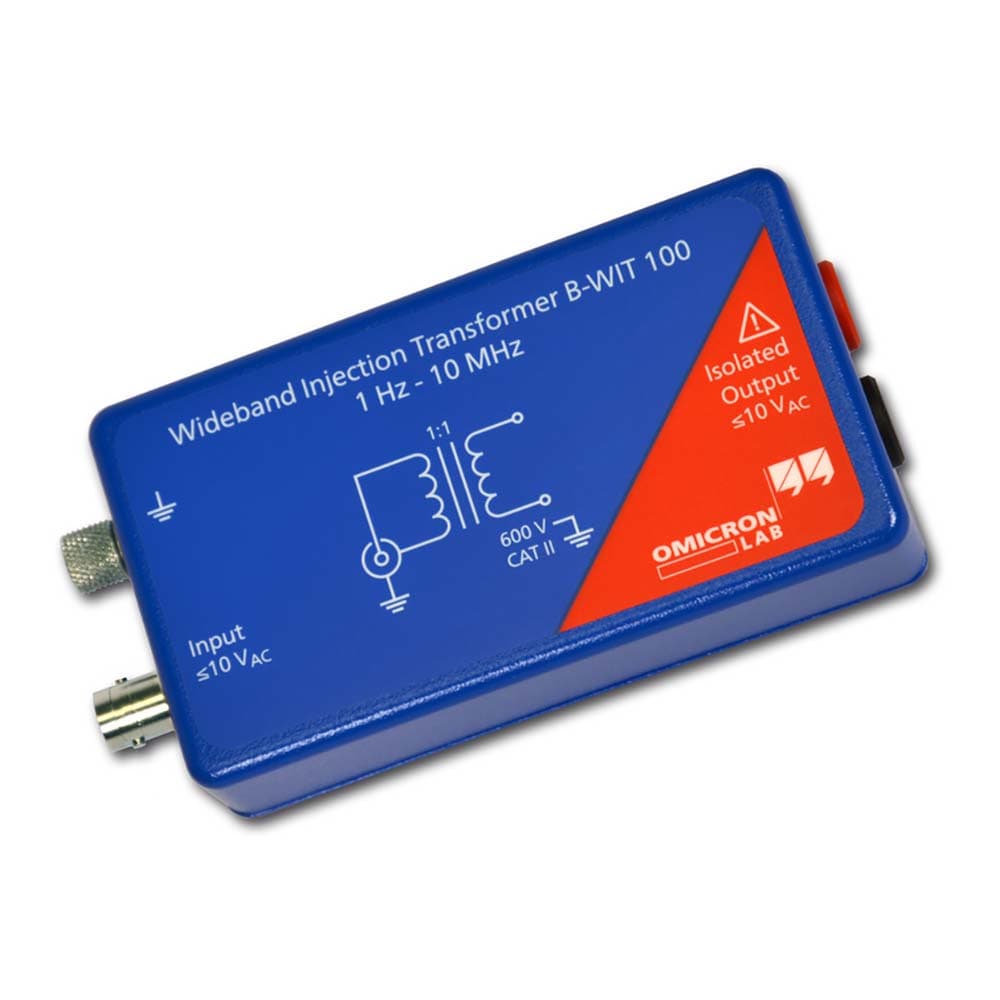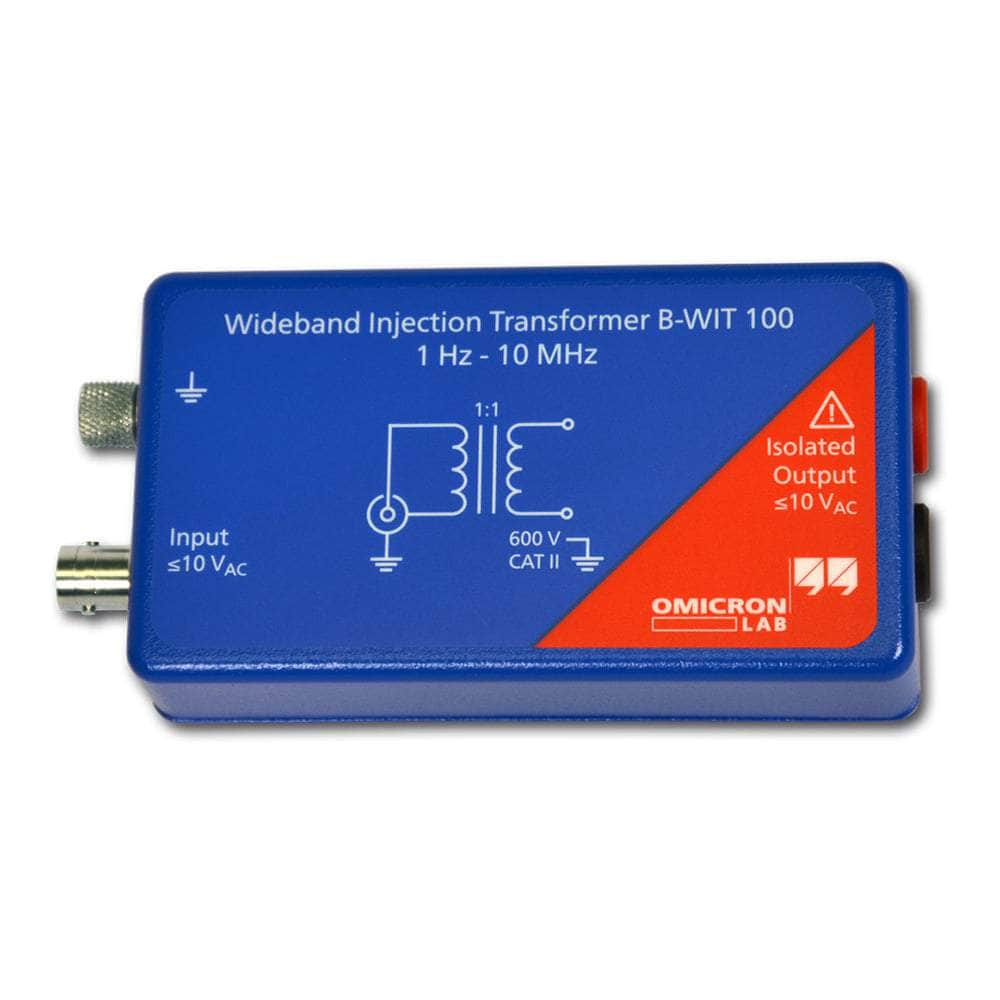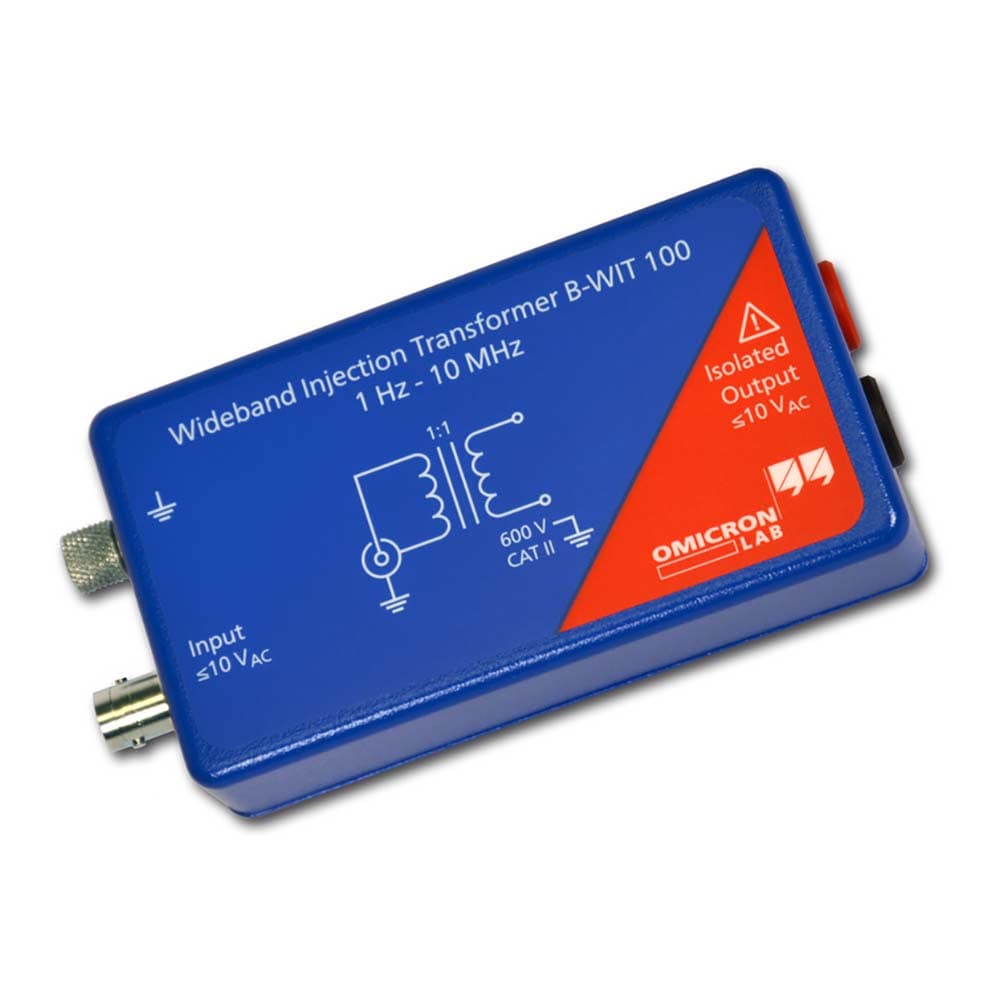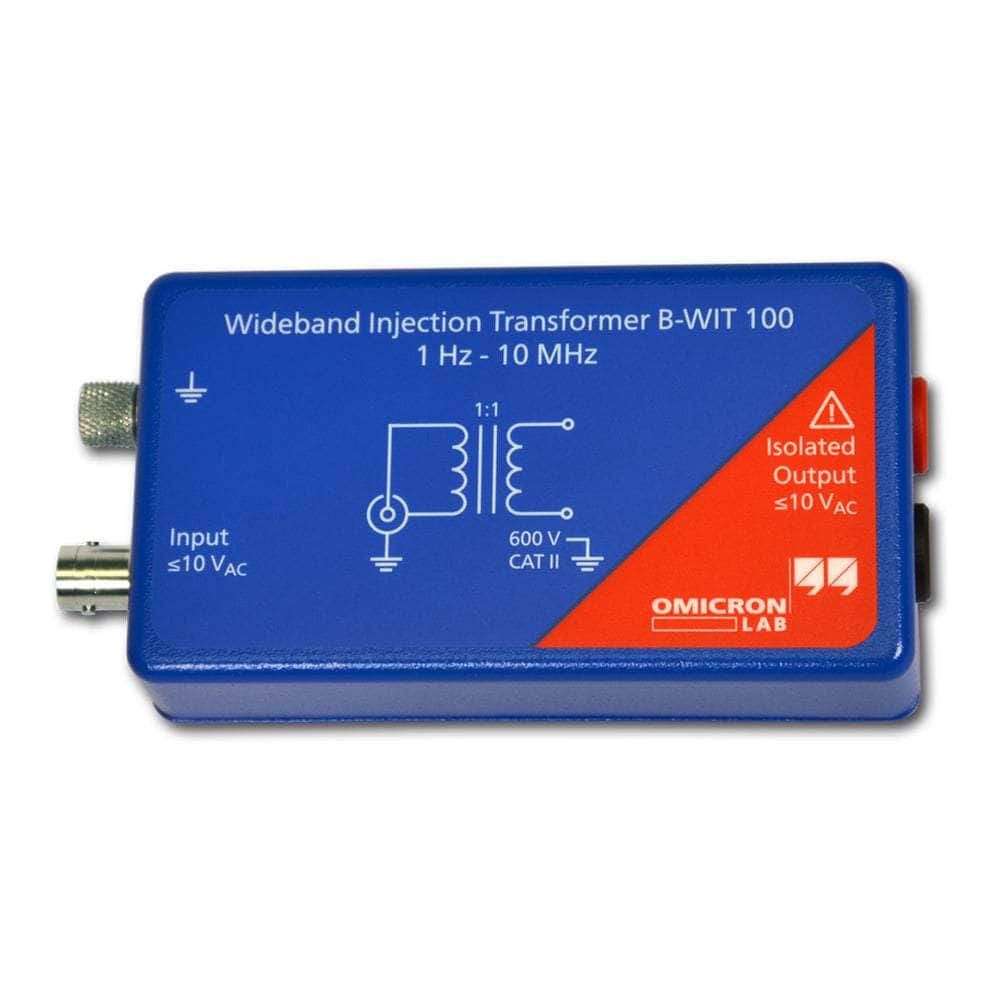

Key Features
Overview
Advanced Control Loop Stability Analysis
The Omicron-LAB B-WIT 100 Wideband Injection Transformer represents the gold standard for control loop stability measurements in power electronics. Engineered for professional electronic design engineers, this precision instrument enables accurate loop gain and phase margin analysis across an exceptional frequency range from 1Hz to 10MHz, making it ideal for both slow and fast control loops.
Unmatched Frequency Range Performance
The B-WIT 100 combines ultra-wide bandwidth capabilities with superior electrical isolation rated to 600V CAT II, ensuring safe operation across diverse voltage regulator applications. Its 1:1 turns ratio and minimal insertion loss of less than 0.5dB at 10kHz guarantee measurement integrity without compromising circuit performance.
This injection transformer serves as the critical interface between your Bode 100 Vector Network Analyser and the device under test, enabling precise voltage injection measurements essential for stability assessment of switching converters, linear regulators, and power factor correction circuits.
Professional Engineering Applications
The B-WIT 100 excels in applications requiring rigorous stability verification, from high-speed switching converters operating at MHz frequencies to slow PFC regulators at Hz levels. Its exceptional linearity and low primary-secondary capacitance of 120pF ensure minimal circuit loading, whilst the robust mechanical design withstands demanding laboratory environments.
Part of Omicron-LAB's comprehensive measurement ecosystem, the B-WIT 100 pairs seamlessly with the B-LFT 100 Low-Frequency Injection Transformer for applications requiring enhanced low-frequency performance below 1Hz.
Downloads
Why Engineers Choose The OMICRON Lab B-WIT 100 Wideband Injection Transformer
Enhanced Measurement Accuracy
Safety and Compliance Assurance
Complete Frequency Coverage
Frequently Asked Questions
Have a Question?
-
Can the B-WIT 100 be used with network analysers other than the Bode 100?
Yes, the B-WIT 100's standard BNC input and banana plug outputs make it compatible with various network analysers and frequency response analysers. However, optimal performance specifications are guaranteed when used with Omicron-LAB's Bode 100 VNA as part of an integrated measurement system.
-
What probe recommendations work best with the B-WIT 100?
Omicron-LAB recommends their PML-111O 10:1 passive probes for optimal performance, though any quality oscilloscope probe is compatible. The key is maintaining low capacitance loading and adequate voltage rating for the circuit under test whilst ensuring proper grounding techniques.
-
How does the B-WIT 100 compare to more expensive competitive solutions?
Compared to higher-priced alternatives like Ridley Engineering's Universal Injector or Picotest's J2101A, the B-WIT 100 provides equivalent technical performance at superior value whilst offering broader frequency coverage than many competing solutions that sacrifice either low or high-frequency performance.
-
Why is a 1:1 turns ratio important in injection transformer design?
The 1:1 turns ratio provides unity voltage transfer whilst maintaining galvanic isolation. This eliminates complex scaling calculations and ensures direct correlation between injected and measured signals, simplifying analysis and reducing measurement uncertainty in professional control loop testing.
-
What is the difference between the B-WIT 100 and B-LFT 100 injection transformers?
The B-WIT 100 provides wideband coverage from 1Hz-10MHz optimised for general-purpose applications, whilst the B-LFT 100 specialises in low-frequency applications below 100kHz with enhanced performance for PFC and other slow control loops requiring maximum signal coupling at very low frequencies.
-
How does insertion loss affect control loop measurements?
The B-WIT 100's minimal insertion loss of <0.5dB at 10kHz ensures the injection transformer doesn't significantly attenuate test signals or load the circuit under test. This preserves measurement accuracy and prevents the test setup from influencing the control loop behaviour being analysed.
-
Can the B-WIT 100 handle DC current in the injection loop?
Yes, the B-WIT 100 is designed to handle up to 10mA DC current whilst maintaining its specified performance characteristics. This capability is essential for injection into feedback loops carrying DC bias currents without affecting transformer performance or measurement accuracy.
-
What makes the B-WIT 100 superior to DIY injection transformer solutions?
Professional injection transformers like the B-WIT 100 undergo rigorous design optimisation for flat frequency response, minimal phase error, and consistent performance. DIY solutions typically suffer from poor high-frequency response, saturation issues, and inconsistent results that compromise measurement accuracy in professional applications.
-
How does the B-WIT 100 ensure safety when testing high-voltage power supplies?
The B-WIT 100 features 600V CAT II compliant isolation between primary and secondary windings, providing safe galvanic separation when testing mains-voltage power supplies. This isolation protects both the engineer and expensive test equipment whilst enabling accurate measurements on potentially hazardous circuits.
-
What frequency range does the B-WIT 100 cover and why is this important?
The B-WIT 100 covers 1Hz to 10MHz useable frequency range with -3dB points typically at 7Hz to 5MHz. This wide range allows analysis of both slow control loops like PFC regulators operating at Hz frequencies and fast switching converters with crossover frequencies in the MHz range, eliminating the need for multiple injection transformers.


